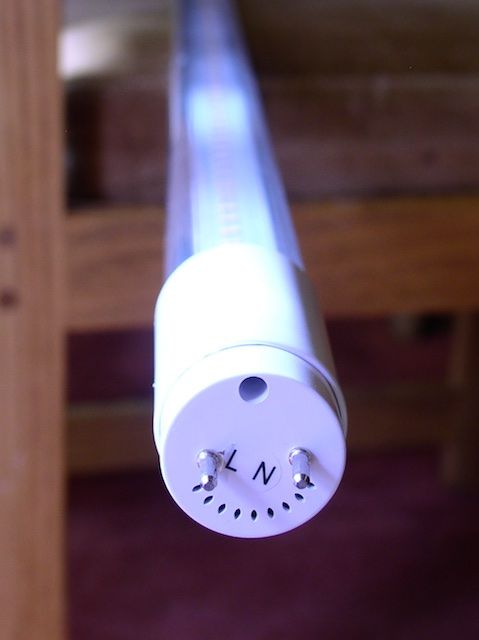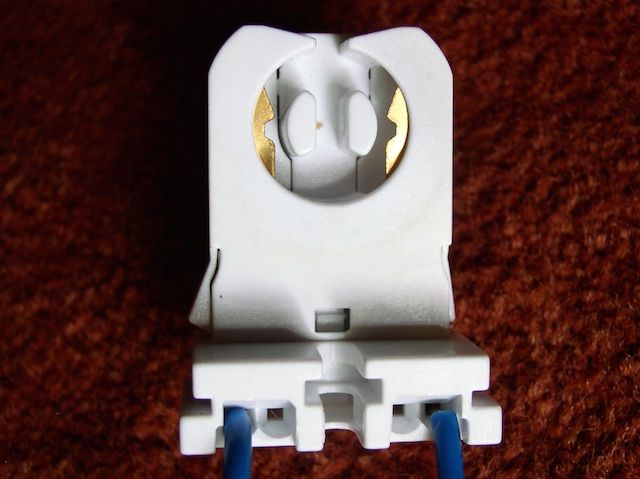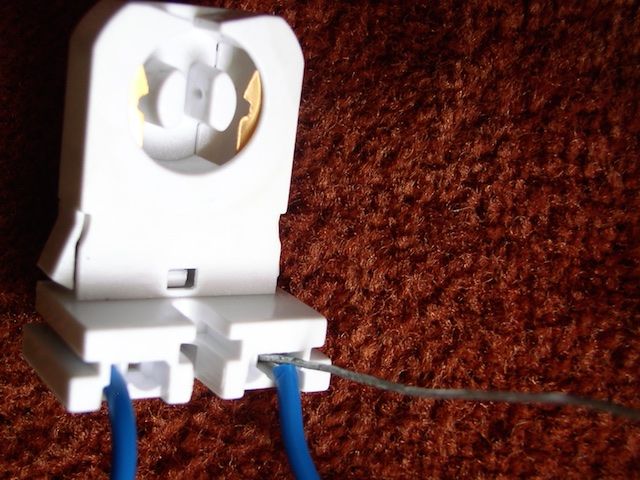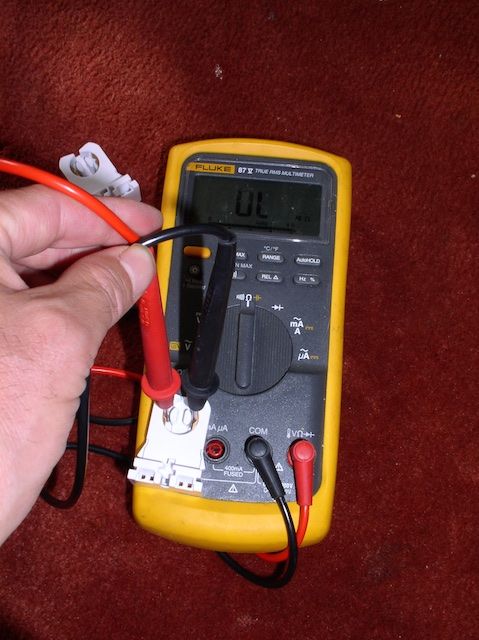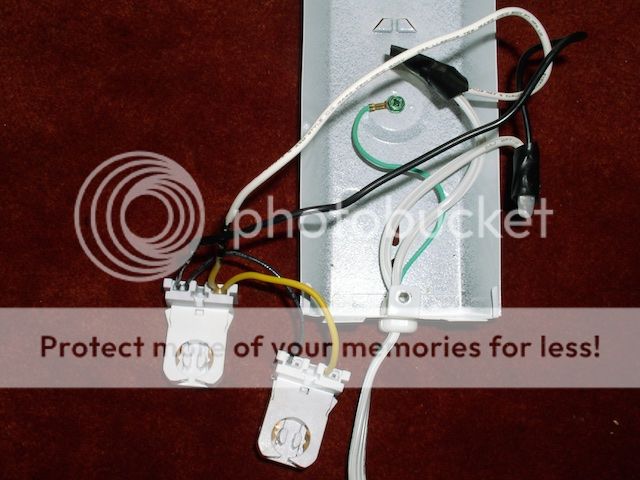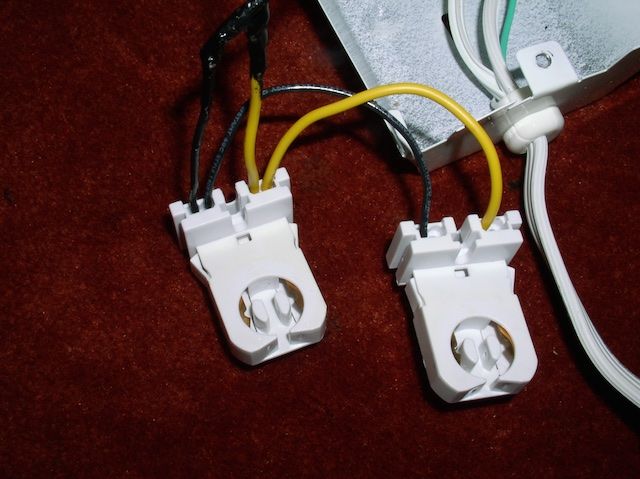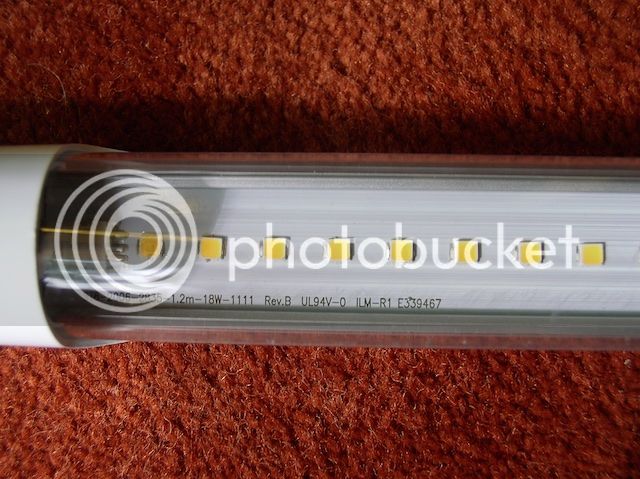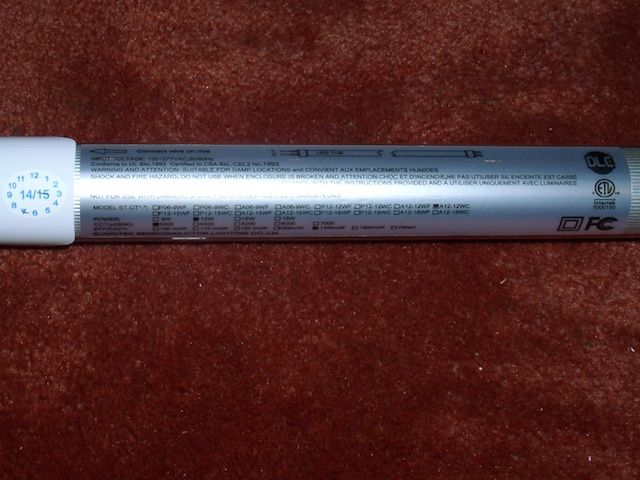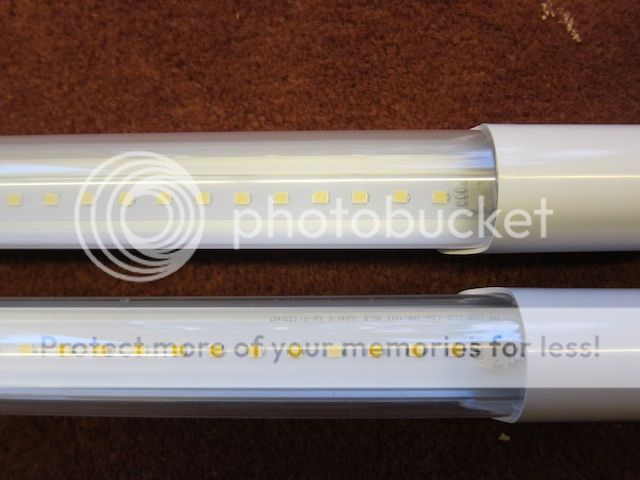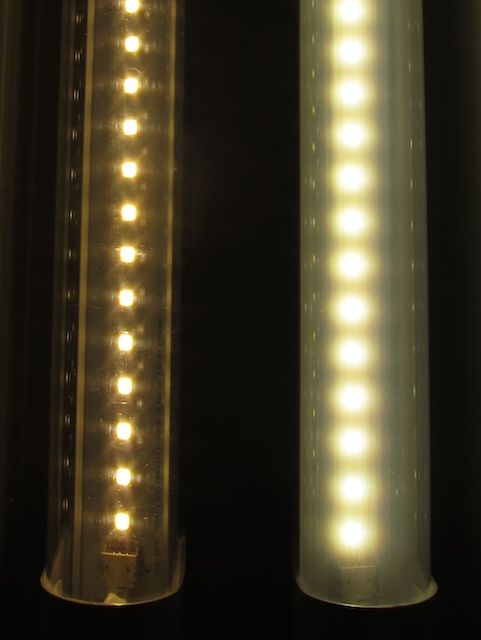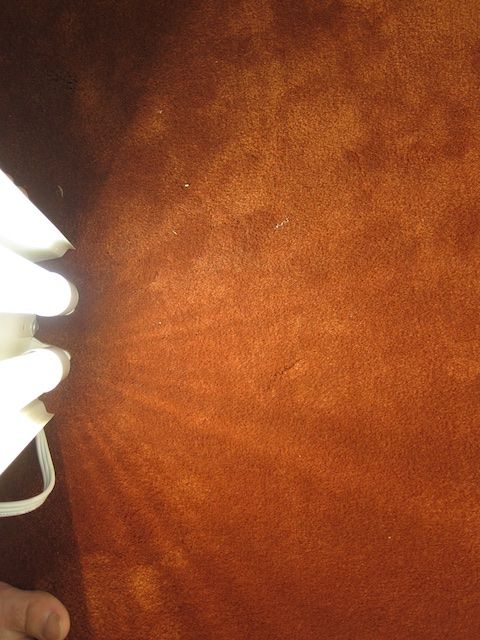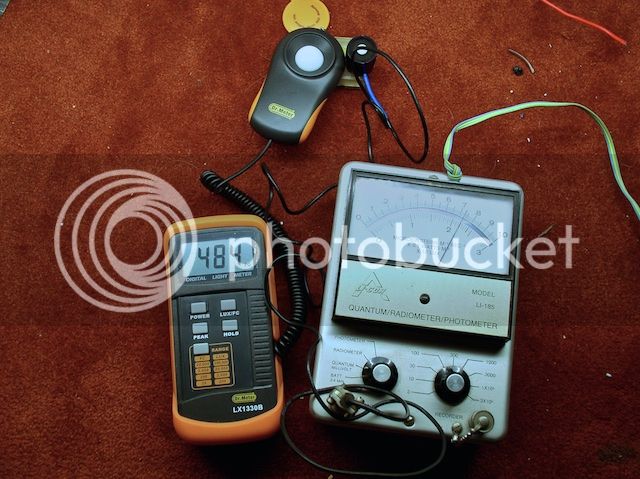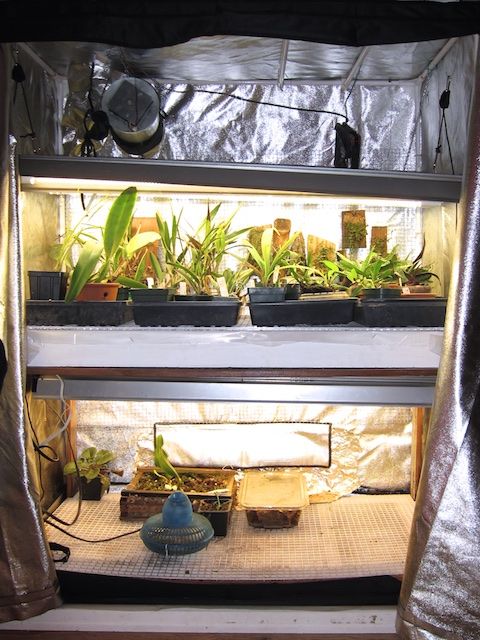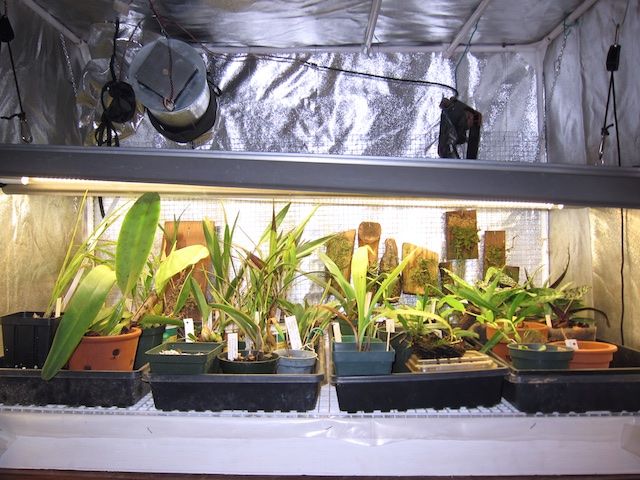naoki
Well-Known Member
There have been LED light bulbs which can be used in place of T8 fluorescent light bubls. Until recently, the efficiencies of these were not so great. But there are quite a few new crops of bulbs with impressive specifications. I recently got one of the most efficient model (147 lm/W and very inexpensive), so here is the test report. I've been mostly using COB-type DIY LEDs (most recent types), which achieve higher efficiency than most commercial products. But this kind of T8-LED could be a game changer. In comparison, efficacy of T5HO and T8 is around 90 lm/W, and T5 (normal output) is around 100 lm/W.
The product is by Sunritek, model# ST-DTA12-12WC (3000K or 4000K) (the info in the website is a bit outdated, but they can send better info if you contact them).
Background:
There are mainly 2 (+1) types of T8 LED bulbs.
Last week, I saw the first type with a relatively good spec. in HomeDepot (Philips InstaFit 4000K, $25, 1600lumen, 12W, 133lm/W). I'm not familiar with this kind, but this would be a very nice fit for people who doesn't want to do modification.
False advertisement:
There are lots of LED companies which advertise bogus performance specifications. Especially, you needs to be careful with those from ebay and Alibaba. But even from these sources, there are some decent companies. The following DoE "Lighting Fact" database contains many products tested by 3rd parties, so one can check the fact from false advertisement.
http://www.lightingfacts.com
By checking the database, Sunritek appears to be an honest company. Sunritek ST-DTA12-12WC(4000K), which we are talking here, is almost at the top efficiency (147.09 lumen/W). This is seriously amazing efficiency. Also, DoE CALiPER report for Linear (T8) LED is a good read, and contains the data from the previous Sunritek model as the top performer.
Cost
I initially contacted the company via Alibaba, but I think you can use the email which is listed here. The only way to get these at this time seems to be factory direct. I got 20x 4' bulbs ($10 each), and the shipping was $95 with UPS. Then WesterUnion Transfer fee was $30. So $325 total for 20 bulbs ($16.25 per bulb). It is a whole-saler, but they sent me "samples" (no minimum order quantity). Since the shipping is expensive, it is only cost effective if you place a large quantity order (maybe a group buy?).
Customization/order options:
There are several customization options.
Comments about the options:
Measurement:
I measured at 12" from the tube (not from the LED surface) in the very middle of the tube. Each value for the T8LED is the average of two different light bulbs. I measured only once for the T5HO and 2 bulb T8LED setup. I used LX1330B for footcandles, and Li-Cor LI-190A for the Photosynthetic Photon Flux Density (PPFD, unit= micromol/m^2/s). I tested DTA (aluminum) 3000K and 4000K and DTP (plastic) 4000K. Room temp was 69F.
The T5HO bulbs were brandnew Philips F54T5/841/HO/ALTO (4', 54W, 4100K) and F43T5/850/HO/ALTO (4', 54W, 5000K), which were about $10 from HomeDepot. After the initial output, the output of florescent light decays. I did use a regular 4-bulb T5HO fixture with reflectors. The energy consumption for T5HO is calculated from the consumption from 4-bulb fixture, which consumed 200W with all 4 bulbs in. If you put only 1 bulb in the 4-bulb fixture, the actual wattage is about 70W.
Interpretation:
Pretty impressive! Basically a shoplight with 2 of ST-DTA12-12WC(3000K) gives similar intensity as a single bulb of T5HO at 12". Note PPFD is the relevant column, and footcandles doesn't matter much. So 26W of LED is enough to replace 54W T5HO (about 50W energy consumption in reality)! Now from the luminous efficacy number of T5HO (around 90lm/W), T8 LED is about 63% more efficient. The additional advantage of LED comes from the fact that T5HO emits the light in 360-degree and some lights are wasted.
Also the bulbs doesn't heat up at all! When you touch, you can feel slightly warm. This is a great advantage for growing plants.
Technical spec:
Each tube consists of 120pcs of Epistar SMD2835, driven each at 35mA/each. 15W version uses same number of LEDs at 41.5mA (so slightly less efficient in theory). I checked the Epistar datasheet, and the efficiency number matches with the datasheet.
Step-by-step conversion of a shop light
Well, it is super simple to rewire, but here is how I did it. It actually makes it as if it is a complicated process, though....
(continue...)
The product is by Sunritek, model# ST-DTA12-12WC (3000K or 4000K) (the info in the website is a bit outdated, but they can send better info if you contact them).
Background:
There are mainly 2 (+1) types of T8 LED bulbs.
- The first type simply fits to the pre-existing fluorescent T8 fixture (like shop light) without any modification. This types REQUIRES working fluorescent ballast.
- The other type requires minor (super-simple) re-wiring of fixture (basically you are disconnecting the ballast).
- Then there is something called a "hybrid" type which can be used with or without the fluorescent ballast.
Last week, I saw the first type with a relatively good spec. in HomeDepot (Philips InstaFit 4000K, $25, 1600lumen, 12W, 133lm/W). I'm not familiar with this kind, but this would be a very nice fit for people who doesn't want to do modification.
False advertisement:
There are lots of LED companies which advertise bogus performance specifications. Especially, you needs to be careful with those from ebay and Alibaba. But even from these sources, there are some decent companies. The following DoE "Lighting Fact" database contains many products tested by 3rd parties, so one can check the fact from false advertisement.
http://www.lightingfacts.com
By checking the database, Sunritek appears to be an honest company. Sunritek ST-DTA12-12WC(4000K), which we are talking here, is almost at the top efficiency (147.09 lumen/W). This is seriously amazing efficiency. Also, DoE CALiPER report for Linear (T8) LED is a good read, and contains the data from the previous Sunritek model as the top performer.
Cost
I initially contacted the company via Alibaba, but I think you can use the email which is listed here. The only way to get these at this time seems to be factory direct. I got 20x 4' bulbs ($10 each), and the shipping was $95 with UPS. Then WesterUnion Transfer fee was $30. So $325 total for 20 bulbs ($16.25 per bulb). It is a whole-saler, but they sent me "samples" (no minimum order quantity). Since the shipping is expensive, it is only cost effective if you place a large quantity order (maybe a group buy?).
Customization/order options:
There are several customization options.
- Wattage: 12W, 15W, 18W
- Case style: Aluminum back (DTA series) or all polycarbonate case (DTP series)
- Efficiency range: there are lower efficiency options, but you want to specify the top efficiency 140-150lm/W.
- Diffuser: clear (no diffuser) or diffuser (which provide more even light, but reduce the total output)
- Wiring: single-ended vs double-ended
- Color temp: 3000K, 4000K, 5000K etc.
Comments about the options:
- I went with 12W because it has the maximum efficiency. As you go higher, you'll get more total output, but the efficiency goes down. With 18W, the efficiency goes down to slightly below 140lm/W (still very good).
- From my measurement, aluminum back DTA series seems to be slightly better than plastic DTP series.
- I chose clear (no diffuser) to get maximum efficiency.
- Single-ended is easier to wire than double ended in my opinion.
- I went with 3000K (which is probably a slightly better option from my measurement below) and 4000K.
Measurement:
I measured at 12" from the tube (not from the LED surface) in the very middle of the tube. Each value for the T8LED is the average of two different light bulbs. I measured only once for the T5HO and 2 bulb T8LED setup. I used LX1330B for footcandles, and Li-Cor LI-190A for the Photosynthetic Photon Flux Density (PPFD, unit= micromol/m^2/s). I tested DTA (aluminum) 3000K and 4000K and DTP (plastic) 4000K. Room temp was 69F.
Code:
watt PPFD footcandle PPFD/W
DTA(3000K) 13 42.8 275 3.29
DTA(4000K) 13.1 42.0 294 3.21
DTP(4000K) 13.3 38.5 255 2.89
2xDTA(3000K) 25.8 82 485 3.18
T5HO(4100K) ~50 83 590 1.66
T5HO(5000K) ~50 85 625 1.7The T5HO bulbs were brandnew Philips F54T5/841/HO/ALTO (4', 54W, 4100K) and F43T5/850/HO/ALTO (4', 54W, 5000K), which were about $10 from HomeDepot. After the initial output, the output of florescent light decays. I did use a regular 4-bulb T5HO fixture with reflectors. The energy consumption for T5HO is calculated from the consumption from 4-bulb fixture, which consumed 200W with all 4 bulbs in. If you put only 1 bulb in the 4-bulb fixture, the actual wattage is about 70W.
Interpretation:
Pretty impressive! Basically a shoplight with 2 of ST-DTA12-12WC(3000K) gives similar intensity as a single bulb of T5HO at 12". Note PPFD is the relevant column, and footcandles doesn't matter much. So 26W of LED is enough to replace 54W T5HO (about 50W energy consumption in reality)! Now from the luminous efficacy number of T5HO (around 90lm/W), T8 LED is about 63% more efficient. The additional advantage of LED comes from the fact that T5HO emits the light in 360-degree and some lights are wasted.
Also the bulbs doesn't heat up at all! When you touch, you can feel slightly warm. This is a great advantage for growing plants.
Technical spec:
Each tube consists of 120pcs of Epistar SMD2835, driven each at 35mA/each. 15W version uses same number of LEDs at 41.5mA (so slightly less efficient in theory). I checked the Epistar datasheet, and the efficiency number matches with the datasheet.
Step-by-step conversion of a shop light
Well, it is super simple to rewire, but here is how I did it. It actually makes it as if it is a complicated process, though....
- Here is how the bulbs are packed.
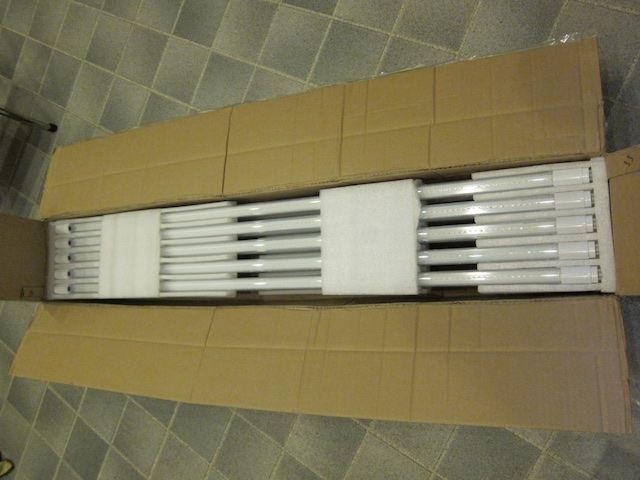
- Remove the 2 (or 3 screws) to open the shoplight.
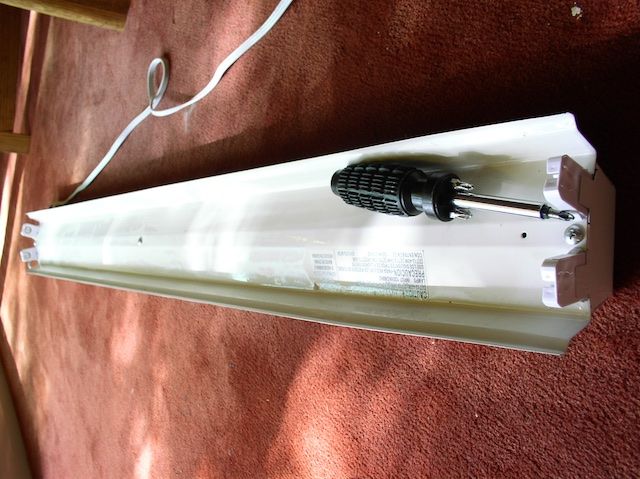
- This is how it look like inside. The box is the ballast, which I need to remove. Left side of the ballast, you can see the "tombstone" (fluorescent lamp holder), the place where bulbs get attached. From the bottom of the fixture, you can see the AC-plug wire coming in. There are 3 wires from this AC-main in. Green is "ground" connected to the pin of the AC plug. Black one is the "Live/Hot", connected to the smaller blade of AC plug. White one is "Neutral", connected to the larger blade of the AC plug.
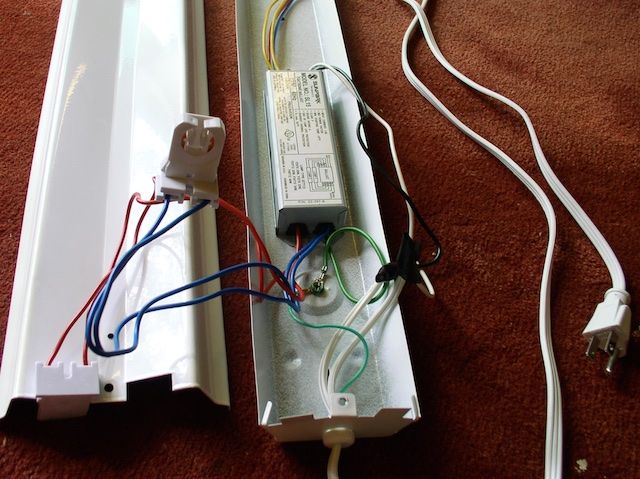
- First cut the Live and Neutral wires from the ballast.
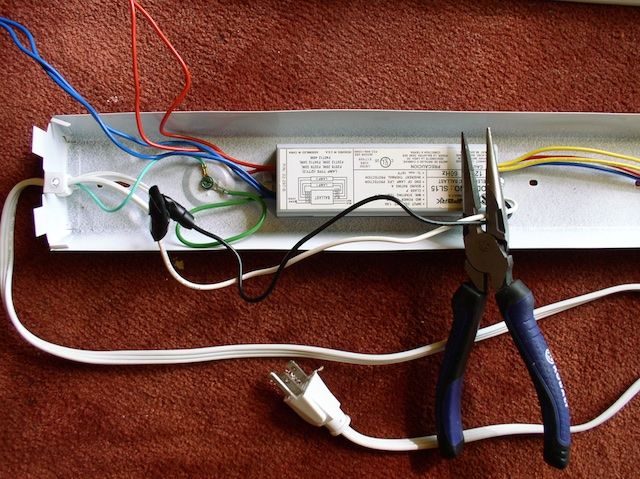
- I'm using an Ohm meter to confirm that the black in Live and white is Neutral.
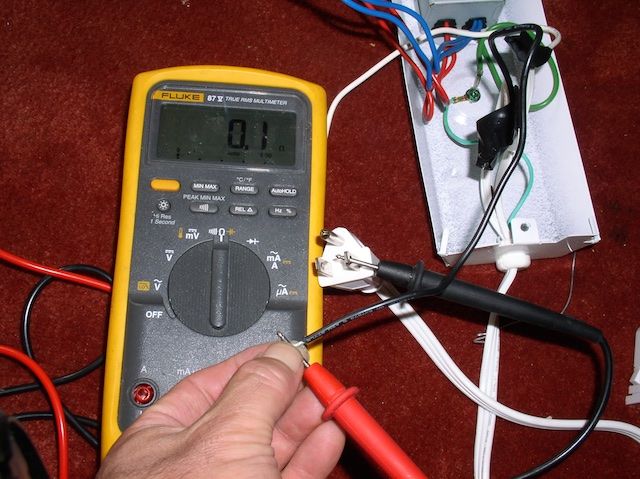
(continue...)
Last edited:




